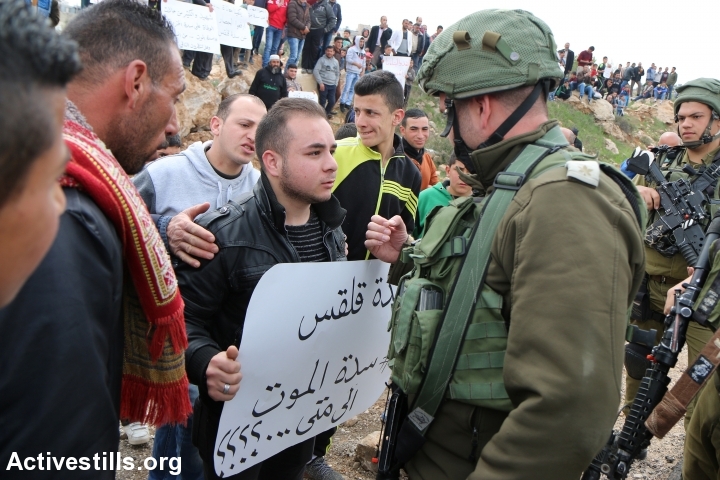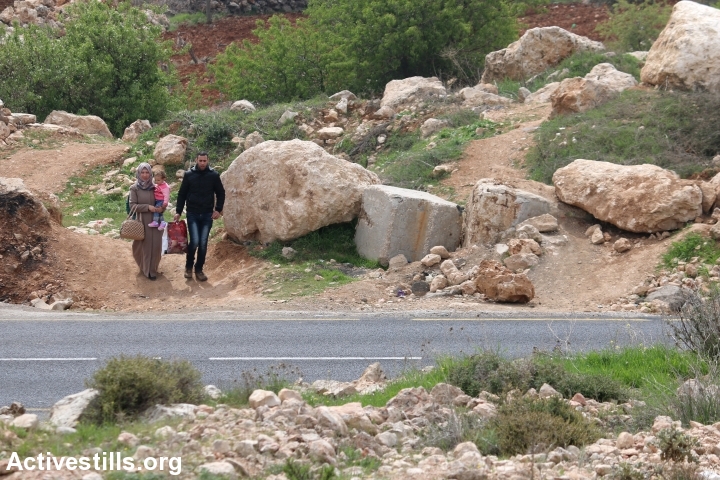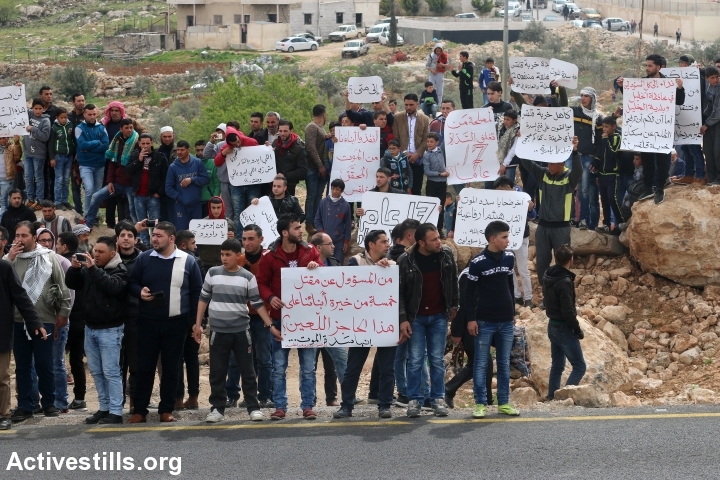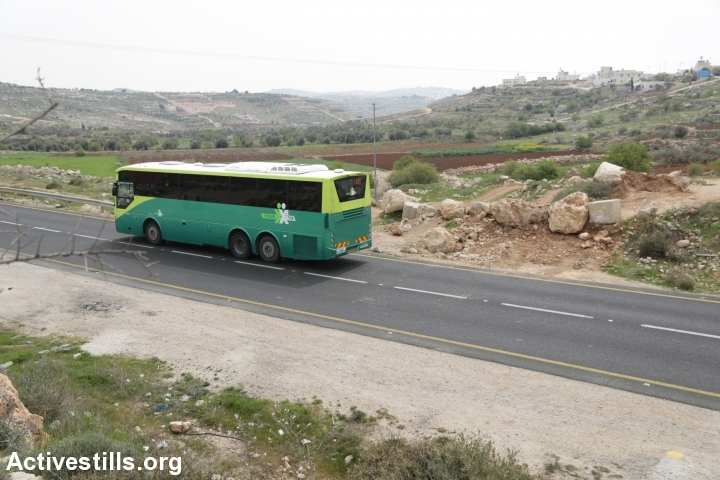The main entrance to the West Bank village of Qalqas has been closed since the Second Intifada. The residents are having none of it.
Photos and text: Ahmad Al-Bazz/Activestills.org

Some 250 Palestinian residents of the West Bank village of Qalqas, south of Hebron, protested on Friday against the Israeli military’s closure of their village’s main entrance, which has been in place since the Second Intifada — which started 17 years ago.
Before the protest, the demonstrators held the Muslim Friday noon prayer beside the large rocks and cinder blocks placed by the Israeli army at the entrance to the village. Children held signs, some of which read “End the siege of Qalqas,” and “17 years of blockade is enough.” Other signs blamed the municipality of Hebron for “not intervening.”

According to one resident, there was never any good reason for the army to target Qalqas, but the closure was part of a strict set of controls that were imposed on the West Bank during the the violent confrontations between Palestinian fighters and the Israeli army during the Intifada.
Due to the Israeli closure, the residents of Qalqas are forced to use alternative routes to leave the village, which are often between 3-4 miles longer than the main one.
Israeli soldiers tried to keep protesters away from Route 60, the main road that cuts across the West Bank from north to south and which is used by both Israeli settlers and Palestinians, until the demonstration ended peacefully without any clashes or arrests.

Yousef Abu Sneneh, an activist from the village of Qalqas, told Activestills that the protest was organized by residents following the death of Haytham Irfa’iya, who was killed after being hit by a vehicle while crossing Route 60 last week. “Five residents of Qalqas have been killed since 2000 while crossing the road on foot due to the Israeli roadblock,” Abu Sneneh mentioned.
He added that many promises have been received from the Israeli authorities to solve the issue, such as building a bridge or a traffic circle and digging a tunnel, but “none of them were implemented.”

Yahia Abu Sneneh, another Qalqas resident, told Activestills that the checkpoints are “frequently being set up by the dirt mounds.” He pointed out that the adjacent Israeli settlement of Beit Hagai has its own junction connecting it to Route 60 and is served by public buses, unlike his village.
The Coordinator of Government Activities in the Territories (COGAT), the Israeli army’s military government in the West Bank, issued the following response:
Qualqas junction is not regulated and is closed in light of the fact that it constitutes as a safety hazard.
The Civil Administration is currently promoting the establishment of an underground passageway for the use of the village residents, in addition to the two existing entrances. Upon submission of the passage by the Hebron town hall, the matter will be promoted by the planning establishments in the Civil Administration.
The demonstration that took place on the 17th of March was a demonstration against the Hebron town hall who is currently not promoting the plan.

